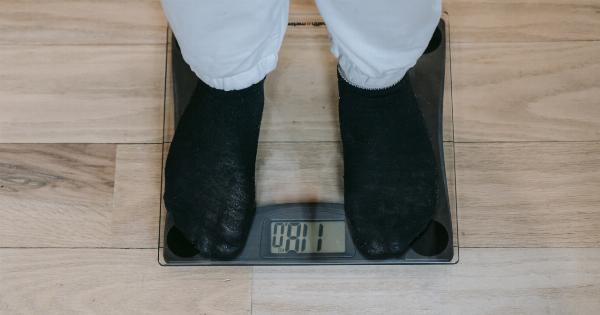Walking is a simple and accessible form of exercise that can help us maintain a healthy lifestyle.
Whether you walk for leisure, as a mode of transportation, or as part of a structured workout routine, it’s important to know how many calories you can burn through this activity. In this article, we’ll explore the factors that influence calorie burn during walking and provide guidelines to help you make the most of your walking workouts.
Factors that influence calorie burn during walking
Several factors determine how many calories you burn while walking. Here are the key factors:.
1. Body weight and composition
One of the most significant factors that affect calorie burn during walking is your body weight and composition. Heavier individuals generally burn more calories while walking than lighter individuals.
This is because it takes more energy to move a heavier body, requiring greater caloric expenditure.
2. Speed and intensity
The speed and intensity at which you walk also impact the number of calories you can burn. Walking at a faster pace or including bursts of higher intensity intervals can increase your calorie burn.
Intense walking engages more muscles and raises your heart rate, resulting in greater energy expenditure.
3. Distance and duration
The distance you cover and the duration of your walk play a role in determining your calorie burn. Walking for a longer distance or a longer duration will naturally result in more calories being burned.
Consistency is key when it comes to calorie expenditure, so incorporating regular walks into your routine can have a cumulative effect.
4. Terrain and incline
The type of terrain you walk on impacts calorie burn as well. Walking uphill or on uneven surfaces requires more effort, leading to higher calorie expenditure compared to walking on a flat surface.
When possible, try to incorporate inclines or hills into your walking routes to challenge yourself and burn more calories.
5. Muscle mass
Your muscle mass influences the number of calories you burn while walking. Muscles are metabolically active tissues that require energy even at rest. The more muscle mass you have, the higher your basal metabolic rate (BMR).
This means that individuals with more muscle will burn more calories, including during walking.
Calculating calorie burn during walking
While there are various formulas and calculators available to estimate calorie burn, the simplest way to estimate the calories burned during walking is to use the MET (Metabolic Equivalent of Task) values.
MET values represent the energy expenditure of an activity compared to the rest state (1 MET). Here are some examples of calorie burn per hour for different walking speeds based on MET values:.
- Walking at a casual pace (2-3 mph): Approximately 200-300 calories per hour (3-5 METs).
- Walking at a brisk pace (3-4 mph): Approximately 300-400 calories per hour (5-7 METs).
- Walking at a very brisk pace (4-5 mph): Approximately 400-500 calories per hour (7-9 METs).
- Power walking or speed walking (5-6 mph): Approximately 500-600 calories per hour (9-10 METs).
Tips to maximize calorie burn during walking
If you’re looking to maximize your calorie burn during walking, consider incorporating these tips into your routine:.
1. Increase your pace
By walking at a faster pace, you can increase your calorie burn. Gradually increase your speed over time to challenge yourself and continuously improve your fitness level.
2. Add intervals
Include intervals of higher intensity or alternate between a brisk pace and a slower recovery pace. This can help elevate your heart rate and boost your calorie burn during your walking sessions.
3. Walk uphill or on varying terrain
Choose routes that involve inclines or uneven terrain to increase the intensity of your walks. Walking uphill engages more muscles and requires greater energy expenditure, resulting in higher calorie burn.
4. Incorporate resistance
Consider using walking poles or wearing a weighted vest to add resistance to your walks. This increases the intensity and challenges your muscles, promoting greater calorie burn.
5. Increase your walking distance or duration
If you have the time and ability, gradually increase the distance or duration of your walks. This will naturally result in more calorie expenditure as you cover more ground or spend more time walking.
The bottom line
Walking is a low-impact exercise that offers numerous health benefits, including calorie burn. The number of calories you burn while walking depends on various factors such as body weight, speed, duration, terrain, and muscle mass.
By paying attention to these factors and incorporating strategies to increase intensity, you can maximize the calorie burn during your walks. Remember to consult with a healthcare provider or a fitness professional before starting any new exercise routine, especially if you have any underlying health conditions.


























